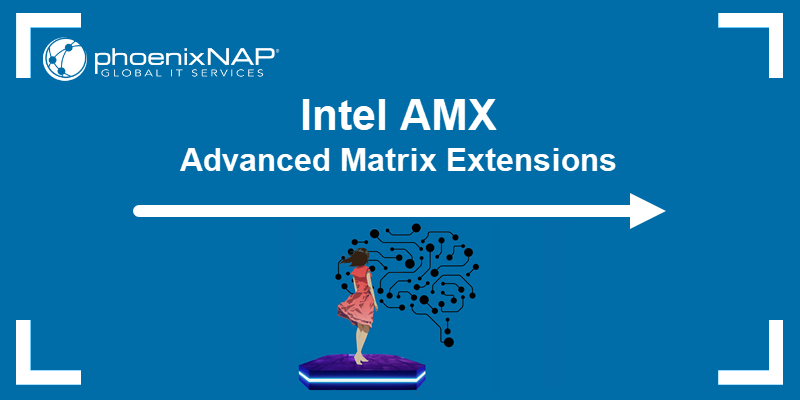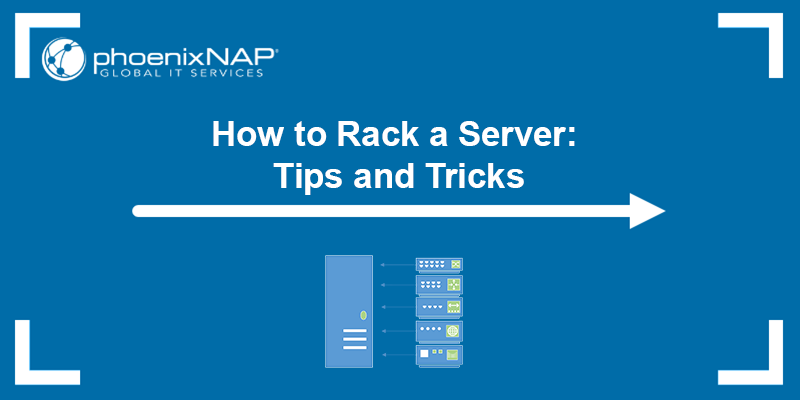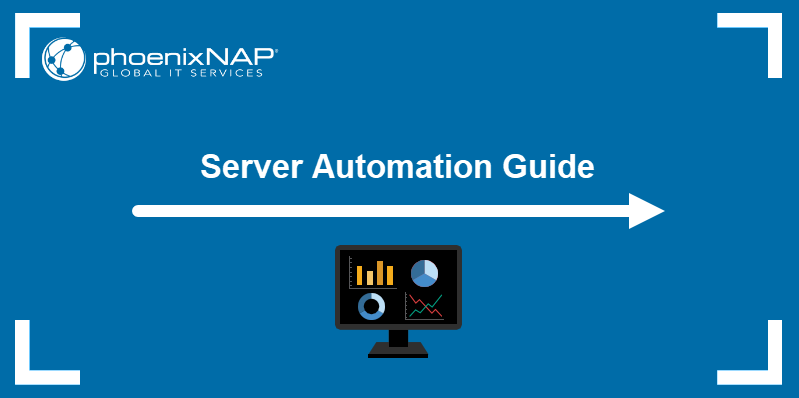Processing petabytes of data every minute requires a huge number of servers, lots of power, and a dedicated team to keep everything running.
Only a few companies operate on such a massive scale, known as hyperscale. Enterprise data centers also need significant resources, but not to the same extent.
Learn about the differences between hyperscale and enterprise data centers and how scale impacts design, security, and compliance.
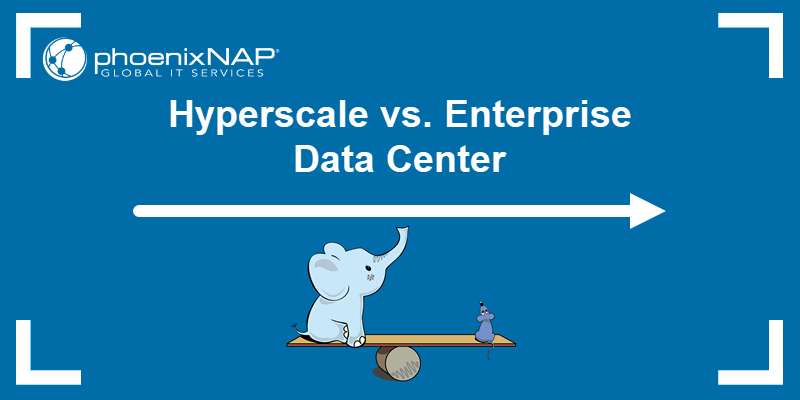
Hyperscale vs. Enterprise Data Center
The following table highlights the differences between hyperscale and enterprise data centers across key categories:
| Category | Hyperscale Data Center | Enterprise Data Center |
|---|---|---|
| Scale | 5000+ dedicated servers. | A few hundred to a few thousand servers. |
| Data Storage | Hundreds of petabytes (PBs). | Hundreds of terabytes (TBs). |
| Design | Optimized for rapid expansion. | Highly customized. Expansion might require significant retrofitting. |
| Purpose | Massive workloads: AI, social networks, search engines, etc. | Serves an organization's specific needs. |
| Management | Managed by cloud providers or specialized IT teams. | Managed by internal IT staff. |
| Compliance | Global compliance approach. | Industry-specific compliance requirements. |
| Automation | Heavily automated using AI tools and machine learning. | Less automated with staff handling many tasks. |
| Latency | Strategically placed near large population centers to ensure low latency. | Low latency, locally positioned to serve a specific organization. |
| Security | Multi-layered, with physical security and zero-trust architecture. | High-level security focused on industry regulations and compliance. |
| Redundancy | Ultra-high redundancy. | Focus on business continuity. |
| Network Capacity | Extreme bandwidth for high-throughput applications (40+ Gbps). | Sufficient bandwidth for the organization's needs (10 to 40 Gbps). |
| Tenancy | Multi-tenant (public cloud). | Single tenant. |
| Cost | Lower cost per unit due to the scale, but extremely high total cost. | Higher cost per unit, but much lower total cost. |
Definition
A hyperscale data center is an infrastructure hub that houses equipment for hyperscale computing, including cloud services, big data, artificial intelligence (AI), machine learning, and other data-intensive applications on a global scale.

Major technology companies like Google, Amazon, and Microsoft build and run hyperscale data centers to store exabytes of data and manage millions of virtual servers using advanced automation tools.
Unlike traditional data centers, hyperscale facilities are typically not in a single building. Instead, they operate as a distributed network of interconnected sites. This allows companies to place resources closer to users, improve response times, and mitigate the impact of local power outages or cyberattacks.
Note: In 2024, there are approximately 1000 hyperscale data centers worldwide. Experts predict this figure will reach 1300 by 2030.
An enterprise data center is owned and operated by a single organization, usually a large enterprise in sectors such as finance, healthcare, or government. It serves to house the organization’s internal IT infrastructure.
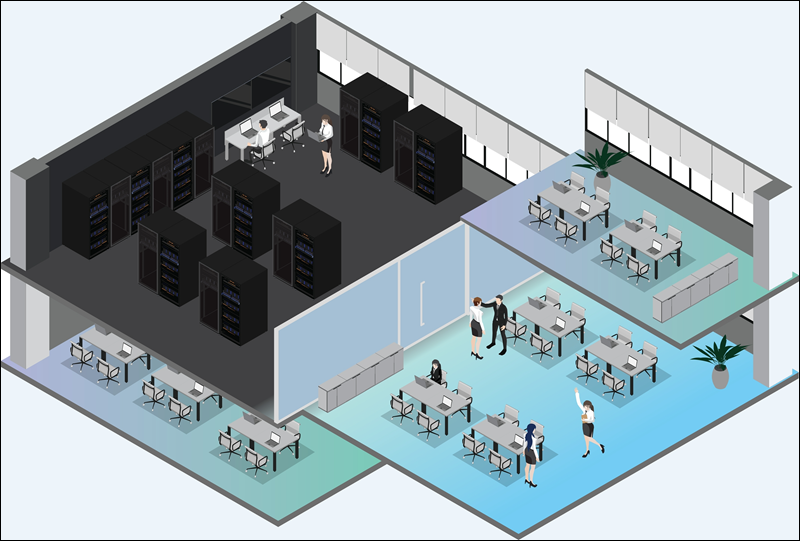
The organization fully controls the data center's design, hardware, compliance, and data management practices. This type of data center is often located on-premises or at a dedicated off-site facility.
Scale
Most hyperscale systems span multiple networked buildings. These facilities can be located close to each other or spread thousands of miles apart. A hyperscale facility:
- Has at least 10,000 sq. ft. of space across one or more buildings. Extreme examples include China Telecom's Inner Mongolia data center, spanning 10.7 million sq. ft., and the Switch Citadel in Nevada, with 7.2 million sq. ft.
- Houses at least 5,000 dedicated servers.
- Stores hundreds of petabytes or even exabytes of data.
- Provides 40 Gbps network connections or higher.
- Consumes over 50 megawatts (MW) of energy annually, enough to power roughly 35,000 U.S. homes. For example, the Switch Citadel data center has a 650 MW capacity. Many hyperscale centers need dedicated power stations to meet their energy demands.
Note: Worried about operational costs? Find out how effective data center power design optimizes performance and mitigates disruptions while controlling costs.
To support business-critical applications, internal databases, and day-to-day IT operations, an enterprise data center typically:
- Ranges from a few thousand to tens of thousands of square feet.
- Hosts several hundred to a few thousand servers configured to handle the organization's specific workload.
- Manages terabytes or even petabytes of data.
- Provides network connections with a transfer rate ranging from 10 Gbps to 40 Gbps.
- Consumes between 1 and 10 MW annually.
Note: If you think an entire data center is too much for your current IT needs, consider setting up an on-site server room at the office.
Infrastructure & Design
The following section dives into the design and infrastructure of hyperscale and enterprise data centers.
Hyperscale Data Center Infrastructure
Hyperscale data centers are designed using a modular approach. The infrastructure relies on virtualization to streamline operations, while the hardware consists of standard, no-fills components to control costs. This allows these data centers to expand rapidly, manage massive workloads, and maintain high reliability.
To achieve these goals, hyperscale data centers:
- Automate everything. Hyperscale data centers must scale quickly across entire zones or regions to accommodate exponential growth in data and applications. To deploy and maintain resources on this scale and with minimal disruption, companies rely heavily on artificial intelligence (AI) and machine learning (ML) to automate tasks that would be impractical to handle manually.
- Conserve energy. These facilities consume vast amounts of energy. Low Power Usage Effectiveness (PUE) and power management are critical for data center sustainability and profitability. Operators focus on energy conservation and renewable energy sources and sometimes build their own power infrastructure. Advanced cooling solutions, like liquid cooling, reduce the energy required to keep equipment at optimal temperatures.

- Deploy close to users. Hyperscale data centers are often located near large population centers or major network hubs to minimize latency and improve user experience (UX).
- Ensure high bandwidth. These data centers are built to support high-throughput applications like AI, machine learning, and streaming. This requires extremely high bandwidth and redundant network infrastructure. Interconnected facilities within a dispersed hyperscale facility also depend on high-bandwidth networks to handle internal data streams.
- Promote cloud services. Hyperscale infrastructure is designed to support multiple tenants in a public cloud environment. Cloud services providers like Google Cloud Platform (GCP), Amazon Web Services (AWS), and Microsoft Azure are investing billions of dollars in building hyperscale facilities and marketing their services worldwide. Other major players, including Meta, Apple, and ByteDance, are also building hyperscale infrastructure for their social network, e-commerce, and gaming platforms.
Note: Find out why data centers increasingly rely on AI technologies for day-to-day operations and how AI impacts data centers across all tiers.
Enterprise Data Center Infrastructure
Enterprise data centers are highly customized to meet the organization's specific needs, which means they are less modular and scalable than hyperscale facilities. They also rely more on manual oversight, with fewer automated processes.
Enterprise data centers enable organizations to:
- Retain full control over data. Organizations can maintain complete control over data to protect sensitive information and meet specific regulatory requirements.
- Customize IT infrastructure. Organizations can build infrastructure using equipment and specifications suited to their workloads. Due to equipment and infrastructure upgrades, enterprise data center expansions can be costly and time-consuming.
- Develop in-house talent. Because these data centers rely on manual operations, they provide an opportunity to train staff and develop in-house expertise specific to the organization's industry.
- Be the single tenant. Enterprise data centers usually have a single tenant, the organization that owns them. The organization can implement stricter access controls and customized security protocols and focus on meeting industry-specific compliance requirements.
- Control initial and operational costs. The cost per unit is higher in enterprise data centers than in hyperscale facilities due to their smaller scale and focus on dedicated resources and customization. However, the ability to hand-pick and tailor each component to the organization's needs can lead to long-term savings by optimizing performance and reducing unnecessary expenses.
Note: Before investing in IT infrastructure, understand the differences between CapEx and OpEx. Shifting to an OpEx model can improve cash flow and increase financial flexibility.
Security & Compliance
Hyperscale operators must implement extensive security measures that comply with international standards to support clients who process huge volumes of data globally. These include:
- Physical security. Biometric access control, 24/7 surveillance, and on-site security personnel.
- Zero-trust architecture. Software and hardware solutions that follow a zero-trust model to ensure no user or device is trusted by default.
- Security protocols. Multi-factor authentication (MFA), encryption, firewalls, and intrusion detection systems to minimize the risk of breaches.
- Audits and assessments. Regular security audits and vulnerability assessments to identify potential weaknesses.
- Broad compliance. Compliance with numerous international and industry-specific standards, such as SOC 2 for sensitive information security, NIST Cybersecurity Framework for risk management, and CCPA and GDPR to meet data privacy regulations.
- Ultra-high redundancy. Redundancy and failover systems across multiple locations to ensure seamless operations even during disruptions. Tenants using public cloud services in these facilities benefit significantly from this affordable, built-in redundancy.

Security measures in enterprise data centers aim to mitigate industry-specific risks and meet regulatory requirements. Typically, these include:
- Physical security. Dedicated in-house security teams and restricted physical access to sensitive areas.
- Isolating critical data environments. Network segmentation is implemented to isolate critical systems, role-based access control (RBAC) to limit data access, and multi-factor authentication (MFA) to secure sensitive environments.
- Data encryption. Encryption is used both at rest and in transit to meet regulatory requirements for data protection.
- Industry-specific compliance. Enterprise data centers align with the organization's business model and operational requirements. For example, a payment processor must comply with PCI DSS and GDPR requirements, while healthcare institutions must meet HIPAA standards.
- Focus on business continuity. These data centers incorporate backup and restore solutions to ensure business continuity. These include disaster recovery plans and failover systems to minimize disruption during cyberattacks or natural disasters. However, enterprise data centers generally do not reach the same levels of ultra-high redundancy found in hyperscale facilities.
Note: Businesses often overlook disaster recovery as a non-essential investment. Check out these disaster recovery statistics to see why it pays off in the long run.
Cost
The size, operational requirements, and technology differences make comparing the costs of hyperscale and enterprise data centers very difficult. The rough estimates in the following table only illustrate the difference in scale and should not be used as a guide for building a data center.
| Hyperscale Data Center | Enterprise Data Center | |
|---|---|---|
| Initial Build | $500 million - $1.5 billion | $10 million - $50 million |
| Power Costs (per month) | $1 million - $5 million | $100,000 - $500,000 |
| Cooling (per month) | $500,000 - $2 million | $50,000 - $200,000 |
| Operational Expenses (per year) | $10 million - $50 million | $1 million - $10 million |
| Staffing (per year) | $10 million - $30 million | $500,000 - $5 million |
| Total (annually) | $100 million - $500 million | $10 million - $50 million |
Hyperscale vs. Enterprise: How to Choose
Very few companies can afford to build a hyperscale data center. Most organizations choose between becoming a tenant in a hyperscale facility or building an enterprise data center. Many have moved to cloud services hosted in hyperscale facilities. These services offer virtually unlimited scalability, automation, and energy efficiency at a competitive price. However, this may not suit companies that require greater control over their infrastructure and data.
Additionally, enterprise data centers are expensive, and only large companies can afford to build and maintain their own infrastructure. However, organizations in heavily regulated industries often need single-tenant solutions that provide complete control over their infrastructure and align with their long-term goals.
Alternatives like bare metal cloud servers and hybrid cloud services offer a middle ground between cloud and enterprise data centers. Bare metal cloud solutions provide the flexibility of cloud services while giving companies more control over infrastructure. These solutions can also be affordable and scalable, making them an attractive option for companies seeking the best of both worlds.
Conclusion
The differences between hyperscale and enterprise data centers are apparent. As explained in this article, they serve distinct purposes, with significant differences in design, facility management, energy efficiency, and scalability.
A direct choice between hyperscale and enterprise data centers is not always suitable for every organization. For many companies, the high costs of building and managing a data center make hybrid solutions a more practical option.
